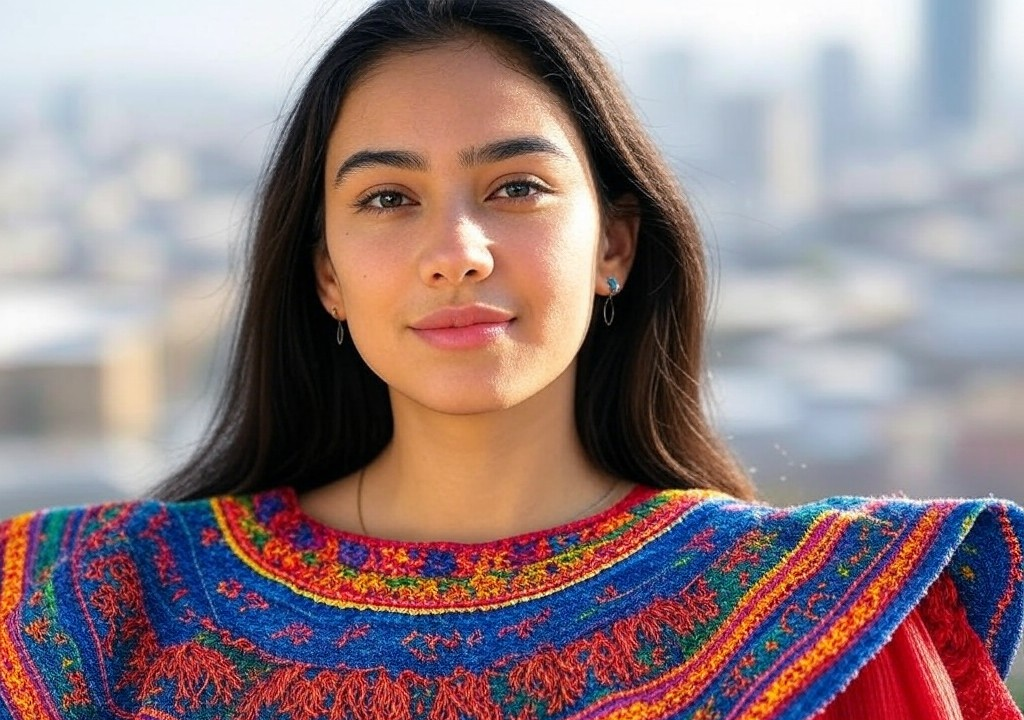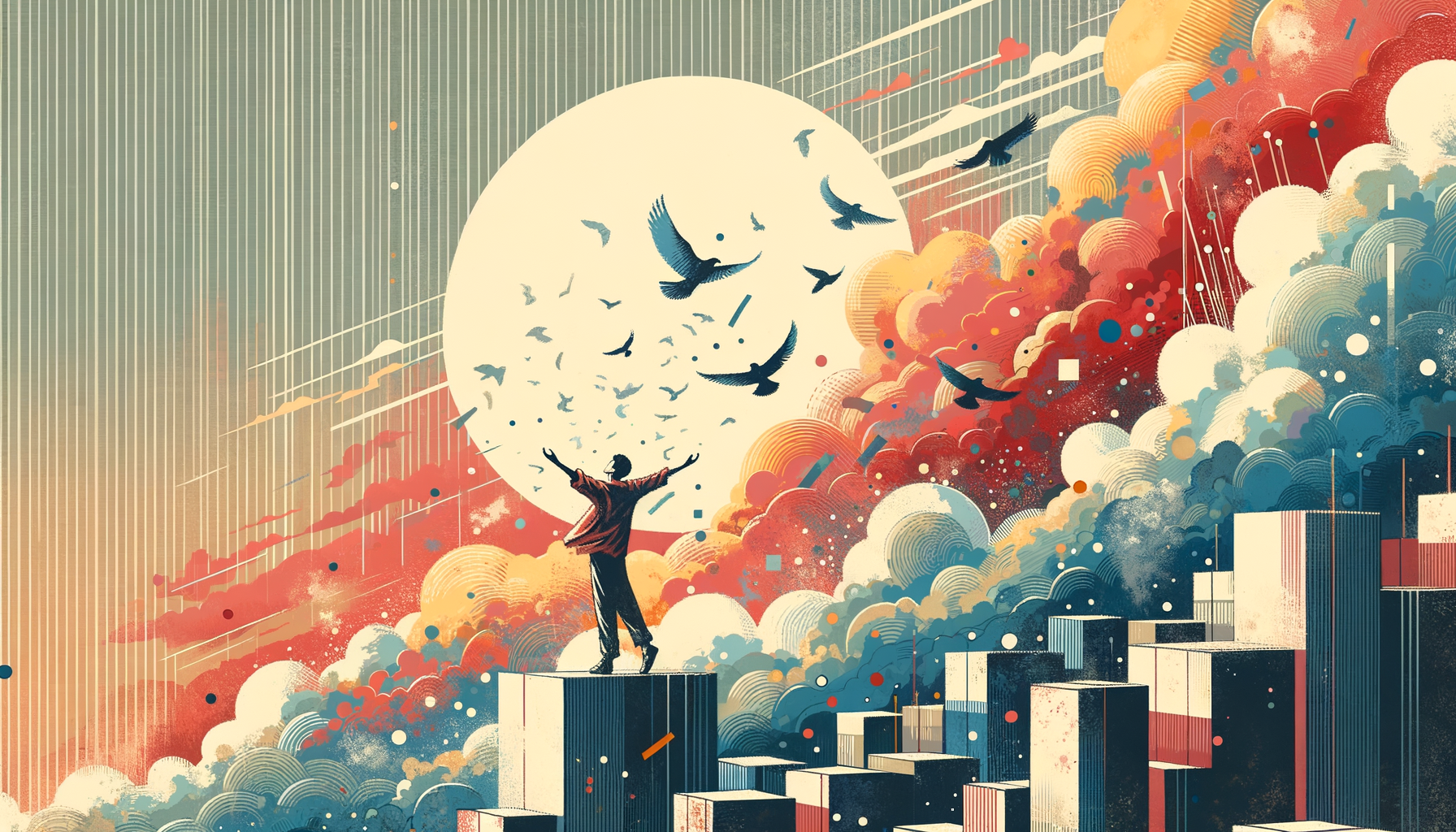What scares me the most? Vulnerability. Yes, vulnerability—that raw, unfiltered openness that leaves us exposed and uncertain. The kind that feels like standing onstage in your underwear while everyone else is fully dressed. It's terrifying. And yet, I chase it, lean into it, and invite it to sit down with me for coffee (or if it’s a bad day, wine). Why? Because it’s also where life happens. It’s where connections bloom, relationships deepen, and we finally stop pretending we have it all together.
But let’s start at the beginning, shall we?
Climbing the Walls of My Comfort Zone
I wasn’t always someone who said, “Yes, vulnerability, let’s dance.” Growing up in Santiago, I was raised in a household of thinkers and storytellers. My parents taught me the meaning of connection through nightly conversations over steaming cups of té con canela (cinnamon tea). Yet, making myself vulnerable never came easily. In Latin culture, there’s unspoken pressure to present strength: “Be polished. Be put-together. Don’t air your chaos.”
When I moved to Madrid for grad school, I was suddenly the girl with the strange combination of Chilean slang and clunky Spanish grammar. I learned quickly that trying to seem perfect only made me invisible. And I wanted so badly not to be invisible. So I started asking myself questions: What am I so afraid of? Why do I feel like everyone else has it figured out? (Spoiler: They don’t, and neither do you. That’s the secret.)
Little by little, I began testing the waters of being unapologetically real. It started with small things—sharing an embarrassing story in class, admitting to a stranger that I felt homesick. And then came the big stuff: confessing romantic feelings to someone I thought might not feel the same. A heartbreak or two later, I realized something powerful: while vulnerability didn’t always lead to the outcome I wanted, it never failed to teach me something essential.
Why Vulnerability Feels Like Free-Falling Without a Net
Let’s talk about why being vulnerable feels so mortifyingly risky.
First of all, it goes against every instinct we have to protect ourselves. Being vulnerable means lowering the drawbridge to your carefully constructed fortress and saying, “Here I am, imperfections and all. Take it or leave it.” It’s no surprise our survival brain screams, “What if they leave it?!”
It also doesn’t help that we’re living in an age of Instagram filters and curated highlight reels. Showing up as your true self feels like breaking the unwritten rules of the digital era. You’re out here talking about your fears while everyone else is busy Photoshopping their selfies and pretending their avocado toast doesn’t sometimes go brown.
But here’s the catch: the more we hide behind perfection, the less real connection we experience. Sure, being vulnerable might lead to rejection or awkward moments. But it’s also the doorway to friendships that feel like home, deep love, and even a stronger relationship with yourself.
Lessons From My Vulnerable Adventures
Over the years, I’ve had plenty of moments that left me feeling raw—and better for it. Here’s what I’ve learned that you can use too:
1. The Fear Won’t Magically Disappear
Contrary to popular belief, bravery isn’t about waiting for fear to leave the room. It’s about looking fear in the eye and saying, “Fine, you can come with me, just don’t touch the radio.”
There’s a concept I come back to often: el coraje no es la ausencia de miedo, sino su conquista. Courage isn’t the absence of fear; it’s conquering it. In practice, this means sending that risky text, showing up for the difficult conversation, or simply admitting you don’t have all the answers.
2. It’s Messy, and That’s Okay
I once tried writing a flawless love letter in my twenties. I spent hours perfecting it, drafting and redrafting, making sure every word glowed like it had been plucked from Neruda’s poems. When I finally sent it off, the reaction? Crickets. Absolute silence.
Years later, I wrote another love letter—this time, without trying so hard to make it perfect. I wrote about my fears, my dreams, and the ridiculous way I organize my books by mood instead of genre. No grand metaphors, just me. And that was the one that led to a relationship (even if it did eventually end). The lesson? Real beats perfect every time.
3. Vulnerability Pays Off, Just Not Always How You Expect
One of my favorite quotes is from Violeta Parra: Gracias a la vida, que me ha dado tanto. Thanks to life, which has given me so much. It reminds me that every vulnerable moment has its gifts, even when they don’t look like what I hoped for.
That confession of love that went unreciprocated? It taught me how to bounce back stronger. The moment I admitted to a friend that I felt lost in a new city? It brought us closer. Vulnerability doesn’t always lead to a happy storybook ending, but it always leads somewhere worthwhile.
4. People Want the Real You
Here’s the kicker: we’re all just waiting for someone to go first. Whether it’s admitting to a friend that we’re struggling or revealing to a partner our biggest insecurities, being open encourages others to do the same. By showing vulnerability, you give others permission to be real too.
A Beginner’s Guide to Getting Comfortable With Vulnerability
Not sure where to begin? Start here:
- Low stakes first: Practicing with a barista or coworker is a good way to get used to opening up. Compliment their laugh, admit you’re having a rough day, or share an honest moment.
- Find your tribe: Surround yourself with people who value realness over appearances. Trust me, it’s a game-changer.
- Celebrate the courage: Whether the outcome is great or cringe-worthy, celebrate the fact that you showed up with authenticity. It’s no small thing.
Vulnerability isn’t a switch you flip overnight. It’s more like learning to dance—awkward in the beginning but joyful once you find the rhythm.
Why I Keep Saying Yes to Vulnerability
Here’s the truth: every time I choose vulnerability, I give myself the chance to grow, to deepen, to connect. It doesn’t mean it gets easier—I still have moments where I hit “send” on a difficult message with one eye closed. But I’ve also learned that vulnerability is kind of like standing at the ocean’s edge. You can tiptoe around, staying safely dry, but the real magic happens when you step in fully. Yes, you might get knocked over by a wave, but you also might find yourself dancing in the surf.
So here’s my challenge to you: what would it look like to let yourself be seen, flaws and all? Trust me, it’s scary. Trust me, it’s worth it. All you need is a little courage, a lot of heart, and maybe a glass of wine at the ready.
Now go forth. Do the scary thing. And remember: the best connections start when we stop pretending to be perfect.




















